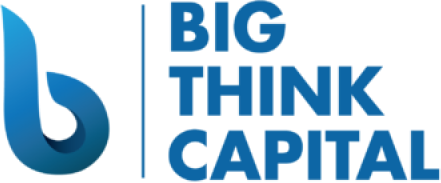Understanding the Impact of Fed Interest Rate Hikes on Your Small Business
Estimated reading time: 5 minutes
- Understanding how Fed interest rate hikes affect business financing.
- Strategic approaches to keep financing affordable amidst rate changes.
- Importance of maintaining a strong business credit score.
- How to navigate tighter lending standards.
- Benefits of exploring alternative financing solutions.
Table of Contents
- What Are Federal Interest Rate Hikes?
- The Direct Impact on Business Financing
- Keeping Your Business Line of Credit Affordable
- Practical Takeaways for Small Business Owners
- Conclusion
What Are Federal Interest Rate Hikes?
Federal interest rate hikes occur when the Federal Reserve increases the benchmark interest rates it sets for lending to banks. This decision typically aims to control inflation, stabilize currency value, and encourage sustainable economic growth. For small businesses, these rates affect everything from loan provisions to credit card interest.
When the Fed raises rates:
- Bank borrowing costs increase.
- Loan and credit products often become more expensive.
- Consumer spending may decrease, impacting business revenues.
For small business owners, understanding the timing and reasons behind these hikes can help in planning financial strategies more effectively.
The Direct Impact on Business Financing
- Cost of Borrowing
When the Fed raises interest rates, the cost of borrowing increases for banks, which subsequently raise rates charged to small businesses. As a result, businesses with variable-rate loans may see their monthly payments rise, making it more expensive to finance operations. According to the latest data from the Federal Reserve Economic Data (FRED), a quarter-point increase could translate into hundreds of dollars in additional payments annually for small business loans.
- Access to Credit
Increased interest rates can also lead to tighter lending standards at financial institutions. Banks may become more selective with loan approvals, which could impact your ability to secure necessary funding. According to a 2024 survey by the National Federation of Independent Business (NFIB), nearly 40% of small business owners reported challenges in accessing affordable financing when rates rose.
- Economic Conditions
Higher interest rates can lead to slower economic growth, affecting cash flows for small businesses. If consumers spend less due to increased loan costs, businesses may face reduced revenues, further complicating their financial landscape.
Keeping Your Business Line of Credit Affordable
To mitigate the potential impact of interest rate hikes on your business, consider implementing the following strategies:
- Evaluate Your Current Financing Options
Review existing lines of credit, loans, and other financial products to understand how much your payments might increase with rising rates. If your current debt is on a variable rate, you may want to explore fixed-rate options.
- Shop for Competitive Rates
With the demand for credit tightening, it is essential to shop around for the best rates. Understand the current market by researching offerings from a variety of lenders, including traditional banks and alternative lenders like Big Think Capital. Leveraging our network of lenders can help you find a product that suits your needs at the best possible rate.
- Consider Alternative Financing Solutions
In a fluctuating interest rate environment, alternative financing can be advantageous. Products such as merchant cash advances and equipment financing often come with more flexible terms and can provide a quick cash influx without the lengthy approval processes associated with traditional loans. Big Think Capital specializes in helping small businesses navigate these options.
- Strengthen Your Business Credit Score
Maintaining a solid credit score enhances your chances of receiving favorable loan terms, even in a high-rate environment. Pay bills on time, reduce outstanding debts, and avoid new credit inquiries right before applying for financing.
- Establish a Financial Buffer
Ideally, businesses should strive to create a financial cushion that can help absorb shocks from increasing borrowing costs. Building reserves can provide a safety net if cash flows tighten due to rising rates or economic downturns.
Practical Takeaways for Small Business Owners
- Monitor Economic Indicators
Stay informed about Federal Reserve announcements and broader economic indicators. Understanding when hikes may happen can help you strategize and make financial decisions in advance.
- Communicate with Financial Experts
Collaborate with financial advisors who can provide insights tailored to your situation. Big Think Capital has experts ready to help you understand your financing options and guide you on the best course of action.
- Preemptively Secure Financing
If you anticipate needing capital in the future, consider securing financing while rates are still manageable. Locking in a loan or line of credit now could save you substantial amounts in the long run.
Conclusion
Navigating the effects of Federal interest rate hikes is crucial for small business owners looking to maintain affordable financing options through a business line of credit. By understanding the implications of these changes, you can take proactive steps to protect your bottom line. Evaluating your financing options, shopping around for competitive rates, and building a financial buffer will help ensure your business remains resilient in a fluctuating economic environment.
To explore personalized financing solutions and better understand your options, connect with our funding experts at Big Think Capital. Visit us at bigthinkcapital.com to learn how we can help position your business for success, even amidst changing interest rates.
FAQ
1. How do interest rate hikes affect small businesses?
Interest rate hikes increase the cost of borrowing, making loans and credit more expensive, which can impact business operations and consumer spending.
2. What strategies can help keep financing affordable?
Evaluate your financing options, shop for competitive rates, consider alternative financing, strengthen your credit score, and establish a financial buffer.
3. Why is monitoring economic indicators important?
Monitoring economic indicators helps businesses anticipate interest rate hikes and adjust their financial strategies accordingly.






